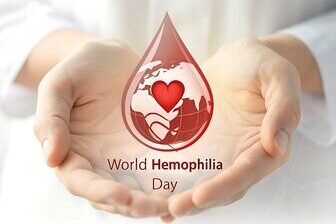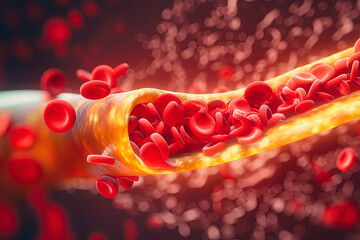Hemophilia: The Silent Struggle Behind Every Bleed
Hemophilia is a rare but serious genetic disorder that prevents the blood from clotting properly. For most people, a small cut or bruise is a minor inconvenience — but for someone with hemophilia, even a simple injury can become life-threatening. This condition, often misunderstood and overlooked, affects thousands of people worldwide, many of whom live with constant caution and quiet resilience. Hemophilia is typically inherited and is caused by a deficiency or absence of clotting factors — proteins in the blood that control bleeding. The two most common types are Hemophilia A (deficiency in factor VIII) and Hemophilia B (deficiency in factor IX). Both types result in prolonged bleeding after injuries, surgeries, or even spontaneous bleeding episodes with no clear cause. In severe cases, internal bleeding — especially into joints and muscles — can occur, leading to pain, swelling, and long-term joint damage. This condition predominantly affects males, as the genes responsible are located on the X chromosome. Women can be carriers and may experience mild symptoms, but full-blown hemophilia in females is extremely rare. A diagnosis is usually made in early childhood when excessive bleeding becomes apparent after minor injuries or routine medical procedures like circumcision or vaccinations. The management of hemophilia has come a long way. Once considered a debilitating and deadly disease, modern treatments have significantly improved quality of life and life expectancy. The cornerstone of treatment is replacement therapy, where the missing clotting factor is injected into the bloodstream. This can be done on-demand (after a bleeding episode) or prophylactically (to prevent bleeding). Recently, advancements like gene therapy and longer-acting clotting factors are opening new doors for more sustainable management and even potential cures. Despite these breakthroughs, challenges remain. Access to treatment varies greatly depending on geography and healthcare infrastructure. In many low-income countries, people with hemophilia still face limited treatment options and a higher risk of complications. Additionally, the emotional toll — living with the constant threat of bleeding, avoiding physical activities, and coping with chronic pain — can weigh heavily on patients and their families. Awareness and education are key to improving outcomes. Knowing the signs of hemophilia, such as frequent nosebleeds, unexplained bruises, or prolonged bleeding from minor wounds, can lead to earlier diagnosis and better care. Schools, employers, and communities can also play a role by being informed and supportive of individuals managing this condition. Hemophilia may be invisible to the eye, but its impact is deeply felt. Behind every person with hemophilia is a daily battle — not just against bleeding, but against misunderstanding and isolation. By raising awareness and supporting continued research and equitable access to treatment, we can help turn the silent struggle into a story of strength, innovation, and hope.



